Space Renaissance International, together with Lifeboat Foundation, Team Synergy Moon and Seanasol, just launched a world wide initiative, called “The Civilian Space Protocol” (CSP). The protocol is a letter that we plan to send to the Governments of 194 Countries of Planet Earth, to solicit them to spend at least 20% of their military budget to fund the civilian space development. Continue reading →
News
SRI News
The green revolution is necessary but not enough!
The green revolution is necessary but not enough!
It is not a matter of “saving the planet”, but saving civilization and its development.
The only sustainable development is the one that aims at space, using the immense resources of the Solar System.
A 18th point shall be added to the agenda of the 17 UN 2030 sustainable development goals (SDG):
BOOTSTRAP A TRUE CIVIL EXPANSION IN SPACE!
Space Community: let’s wake up and fight for our solutions!
Stop following or denying the insufficient closed world recipes! Continue reading →
We don’t need a “Planet B”. We have an entire Solar System
A million and a half students, even very young ones, took to the streets Friday March 15th, in two thousand cities around the world, for the climate, responding to a Greta Thunberg’s call. Greta is a 16-year-old student in Stockholm: “I will not stop. Not until greenhouse gas emissions have fallen below the alarm level.” Considering the great support she had, it would seem that students were not waiting for anything else, with great outcry of the ecologists of various tendencies, who have for years repeated the same call, without being able to arouse mass movements of this magnitude. Continue reading →
Spacecom 2018, Houston, What’s Moving On The High Frontier
SpaceCom, the Space Commerce Conference and Exposition, supported by NASA’s Johnson Space Center, since it’s beginning in 2015 has become one of the most important events in the United States, dedicated to commercial applications of space technologies. Concluding a very intense 2018, in which SRI participated in several important space events — the Space Renaissance Italia 2nd National Congress in May at INAF in Bologna, UNISPACE+50 in Vienna, IAC 69th in Bremen — we participated to Spacecom 2018, November 27th and 28th, in Houston, TX USA. Continue reading →
The 69th Congress of the International Astronautical Federation, in Bremen, celebrated NewSpace, without Musk, Bezos, and Branson.
The 69th Congress of the International Astronautical Federation took place in the halls of the Bremen exhibition center from 1 to 5 October.
Great success both for the public and for the speakers, despite the enrollment fees definitely out of budget for many: more than 6300 registered participants, of which almost 50% very young, more than 2000 papers presented in the various symposia. The title of the Congress was very interesting: “Involving everyone”. This gave the impression that there was plenty of space at the Congress for the themes of civil development in space. The attention to the impetuous development of the NewSpace sector is now felt everywhere, and the most important global space congress could not avoid being impacted. After all, it is thanks to the growth of the NewSpace sector if the IAF Congress has recorded this remarkable success. But which were the predominant themes of the Congress? Has the promise announced in the title been kept? In part, yes, but a lot of work remains to be done. Continue reading →
The paper presented by A. Autino at IAC 2018
This paper was presented during the symposium D4.2
Abstract
Space Renaissance International (SRI)[1], with a key role played by its Italian chapter[2], organized a stakeholders platform and discussion forum around the paradigm change from space exploration to civil expansion and settlement beyond Earth. The various members contributed with insights and views from Space Agencies, industry and academia, including also NewSpace entrepreneurs, students and civil society representatives. The objective of this initiative is to highlight the relevance of the NewSpace paradigm for the economy, with a focus on Italy, while evaluating the valuable benefits and opportunities of social and cultural developments related to space activities. The key element of this paper is to identify key recommendations and future strategies to accompany the transition from the current space exploration approach, towards an innovative concept of “space industrialization”, which includes the construction and maintenance of space infrastructures directly in space, also by reusing space debris and space resources, and by developing new capabilities for civil passenger transportation and accommodation in space. Some examples are provided in terms of reusable launch systems approaches (e.g. Space X) and Additive Layer Manufacturing technology, highlighting the technological and economic benefits for the industrial development of Earth’s orbit and beyond. The paper further elaborates on enabling technologies that could be further investigated as a first priority: low-cost orbital transport for civil passengers, inter-orbital maneuverability concepts, horizontal takeoff and soft acceleration during Earth to orbit travel, innovative and safer re-entry approaches. Among others, priority should also be given to scientific research to protect life and health; e.g. cosmic radiation protection, space habitats with artificial gravity by rotation, artificial ecosystems and exo-gardening and horticulture. This framework also includes reflections on key legal aspects, and a critical review of the Outer Space Treaty of 1967 and the International Maritime Law. The paper in its conclusion highlights how the leaders of such technological developments will benefit from significant returns on investments, but could also ignite a new Renaissance, five hundred years after the Italian one.
Space Renaissance at International Astronautical Congress 2018, Bremen
Space Renaissance will be present at IAC2018 in Bremen, October 1st to 5th! The title “Involving everyone” is particularly suitable and interesting, perfectly in tune with our main goal: to kick-off the civilian space development, civilization expansion into outer space, industrialization of the geo-lunar space, developing civil passengers transportation and accommodation in space. We will promote the paradigm change: from space exploration to space settlement! Our presentation “Building in Space: first steps in civil expansion beyond Earth” will be given October 3rd, in the morning, during the D4.2 Symposium: D4. 16TH IAA SYMPOSIUM ON VISIONS AND STRATEGIES FOR THE FUTURE D4.2. Contribution of Space Activities to Solving Global Societal Issues. The paper is co-authored by Adriano Autino (SRI, President), Stefano Ferretti (ESPI), Luigina Feretti (INAF), Alfredo Roma (ex Coordinator of the Galileo Project for Italy), Stefano Antonetti (D-ORBIT). The following text will be handled to the IAC attendees.
HIGHEST PRIORITY: CIVILIAN SPACE DEVELOPMENT
The development of the NewSpace sector, which is triggered by the advent of reusable rockets, new materials and processes, including additive layer manufacturing technologies, is quickly generating a unique industrial and cultural revolution. This remarkable paradigm has the inherent capacity of ensuring the right to development for all Earthlings, as was stated by the UN “Declaration on the Right to Development” in 1986. In progressively shifting the context and burden of industrial development outwards from the Earth’s surface, it will also support the goals of the UN Agenda 2030 for Sustainable Development. This important potential describes the social perspective that we have called the “Space Renaissance”.
We take this opportunity to renew our most urgent recommendations: that the International Astronautical Federation act within all their means to support the immediate prospect of the industrialization of Earth orbit and of geolunar space; based on a long-term strategy that includes the human expansion, and extension of civil rights, into outer space. We are aware that humanity could keep on just exploring space for other 50 years, and the high frontier to remain closed to privates, enterprises, civil expansion and settlement. More: we could even begin exploiting space resources, mined by means of automated machines endowed by artificial intelligence, without expanding civilization into space, avoiding a true colonization. All of that would just increase the pressure on our world, should the planet remain closed. Only a true expansion of mankind into the outer space will reverse the global crisis that our civilization is going through.
A solid industrial perspective
Some industrial activities can give a ROI in a reasonable times. Recovery and reuse of space debris and wreckages, at least in its recovery part, is very much needed, for orbital safety. With proper orbital infrastructures, to capture debris, the logical next step will be to re-process them, getting powders for 3D printing, a platform for orbital ISRU, very first bricks of orbital factories. Assembly of satellites and vehicles in orbit is a large industrial perspective, that will decrease the cost of design, construction and launch: a first step towards a self sustaining space industrial development. There’s a number of in-orbit operations: transport and maintenance of satellites in orbit, refuelling stations, repair shops, orbital sites, orbital yards, spaceports, habitats. All the activities tied to space tourism, such as hotels and lodging facilities, passengers transportation systems (Earth-Orbit, inter-orbit, Earth-Moon). Products from zero gravity, asteroid and lunar mining are other very promising industrial activities, on which several startups were already born.
Priority to enabling technologies
Acknowledging the dramatic need to start moving and accommodating civilian untrained passengers in space, we urge a strategy to achieve as soon as possible few key objectives: low-cost, safe and comfortable transportation of civilian passengers in space, protection of their life and health during travel and while working and living in space; recovery and recycling of space debris; construction technologies in-orbit, along with dedicated programs for in-orbit validation to be initiated at the earliest phase; exploitation of asteroids and planetary resources, enabling the construction of large rotating infrastructures in geolunar space. Priority shall be given to enabling technologies. Humanism is a necessary background for any scientific and technological design and development: starting from the need of real persons is key. If technicians and businessmen need to travel in space in large number, the cost of the transport vehicles shall be reduced. Moreover, the vehicles need to be properly designed to transport civilian passengers, who have not been trained as astronauts. Accelerations should not exceed those of a normal airliner, not too much at least. A new spirit of collaboration among different NewSpace sectors, space vehicles developers, reusable rockets producers, space tourism, space agencies and civil aviation, is highly recommended. Softer and safer atmosphere return technologies are required. Protection against cosmic radiation is top priority, and so is artificial gravity. Last, but not least, man cannot live in a full metal artificial environment: any space habitat, be it constructed on a celestial body surface or in orbit or in a Lagrange point, shall be endowed with vegetable terrestrial life, not only for food production, but also for the sake of environmental / psychological health. That means to accelerate the experimentation of artificial ecosystems in closed environments.
A brief speech given at UNISPACE+50 in Wien, 19 June 2018
During the “Space and Society” plenary session, the President of SRI, Adriano Autino gave this brief note: “Humanity is facing three main challenges. The first one is the so-called save-the-planet thing, many goals of the 2030 agenda include these goals, climate change and other things. Let’s say to use space for Earth environment. The second challenge is space exploration, that will maybe take us to Mars with a first expedition. The third challenge is to save the civilization. Our analysis at Space Renaissance International is that this third challenge is disregarded and underestimed, because eight billion terrestrials cannot save their civilization if they will not begin immediately to expand into space. Expansion of civilization into space is a different thing from the exploration of space. Exploration can be done only by trained astronauts, able to bear acceleration of 4-5G’s, and to face hard and dangerous re-enter in the atmosphere. So, what we need, if we are serious to carry civilian passengers into space, is a full change of paradigm in the mission requirements. If we want to travel work and live in space we have to be protected by cosmic radiation, we have to have artificial gravity in order to avoid the problems for health, low acceleration, safe reenter, etc. A full change of paradigm. I would like to see not only the space tourism branch to face this problem. I would like to see many other industrial, commercial and governmental branches to be aware of this challenge, to save our civilization from a possible implosion caused by the many problems that we have on this small planet now.”
Who we are
- Space Renaissance International is a global, open-membership volunteer organization, with a strong philosophic background inspired by the legacies of the 14th century Renaissance, New Humanism and Astro Humanism.
- Our organization is present in 25 countries, in five continents: Europe, America, Asia, Africa and Oceania.
- Our philosophy is the strong bond based on human equality without ethnic, religious, political or gender discriminations and our efforts are focused to expand civilization in the outer space.
Our mission and goals
- We are dedicated to trigger a change in worldwide perception and policy towards space travel and its uses, by increasing the financial and human investment in space many-fold and helping to focus that investment effectively.
- We seek to begin a new Renaissance that will lift humanity from the cradle of Earth, open up the Solar System and, eventually, the stars, moving forwards from education and culture towards an advanced scientific and technological development.
- We connect aerospace and NewSpace companies, institutions, NGOs, Governmental Organizations, space agencies and individuals in order to boost civil expansion in space.
- According to the resolution of the Space Renaissance International II World Congress, held in October 2016, we focus on the bootstrap of civilization expansion into outer space, by promoting civilian space development as top priority worldwide.
- Build orbital, lunar and asteroid settlements to create a strong sustainable space economy and a culture based on a larger perception of the world, extended to the whole solar system and its surrounds.
Our Vision
- Space development on a massive and exponential scale will significantly contribute to a global political stability as it will provide a fast growing economy, with constant evolving markets. The rapid development of this resource will require the cooperation and participation of all nations and peoples.
- We strongly support the UN Charter of Rights and we feel the urgency to expand mankind’s horizon into extraterrestrial space, as Earth resources are limited, growth is dramatically needed, but further growth is unsustainable within the limits of our mother planet.
- We need quick solutions to avoid the regression and decay of civilization. We can reach this goal only by cooperating globally, better using existing space technologies and developing new ones, and working to enter a new era: the age of Space Renaissance.
Our Academy
- Space Renaissance International develops its Education & Outreach effort in a dedicated branch: the Space Renaissance Academy
- SR Academy hosts, so far, an overview of some projects and three main classrooms:
- the Gerald O’Neill Room, includings webinars and e-lectures
- the Krafft Ehricke Room, including technical sessions
- the Konstantin Tsiolkowsky Room, dedicated to talks, video recorded, among space philosophers, scientists, writers
- Space Renaissance Academy offers seminars, courses and master-classes on philosophies and technologies for a new industrial and cultural development, to students, companies, education entities.
Our Corporate Membership Offer (abstract)
- Networking: sharing experiences and meeting new partners; contacts feed the business and are the key to success
- Business Services: supporting business growth through the expansion of business relationships
- Advocacy: working as an intermediary between companies and institutions, to ensure that the addressed issues are submitted to the most appropriate decision makers; safeguarding own interests is easier when having allies
- Edu-coaching: supporting companies who plan to expand in the NewSpace market, providing their expertise and relationships
- StakeHolders analysis: supporting NewSpace and Traditional Aerospace companies analysing the requirements of possible stakeholders, with the goal to identify innovative solutions and projects
Also download a pdf version of this text, suitable to be handled as a flyer.
An Open Letter to UNISPACE+50 Conference
The UNISPACE+50 conference is of great significance, addressing a crucial juncture in the crisis of growth that civilization is experiencing. Only an outlook for long lasting cultural and socio-economic growth will properly mitigate social imbalances and fears, and act as the leading factor for peace.
The development of the NewSpace sector, which is triggered by the advent of reusable rockets, new materials and processes, including additive layer manufacturing technologies, is quickly generating a unique industrial and cultural revolution. This remarkable paradigm has the inherent capacity of ensuring the right to development for all Earthlings, as was stated by the UN “Declaration on the Right to Development” in 1986. In progressively shifting the context and burden of industrial development outwards from the Earth’s surface, it will also support the goals of the UN Agenda 2030 for Sustainable Development. This important potential describes the social perspective that we have called the “Space Renaissance”.
We greet with enthusiasm the announcement that UNISPACE+50 welcomes the participation of NGOs, including Space Renaissance International, an organization that promotes expansion into space, as a means to reverse the global crisis and ensure the continuation and progress of civilization.
We take this opportunity to renew our most urgent recommendations: that the United Nations act within all their means to support the immediate prospect of the industrialization of Earth orbit and of geolunar space; based on a long-term strategy that includes the human expansion, and extension of civil rights, into outer space. In such a strategy the following leading objectives should be pursued:
- Low-cost, safe and comfortable transportation of civilian passengers in space, and protection of their life and health during travel and while working and living in space;
- The development of technologies for the recovery and recycling of space debris, as a high priority;
- The developing of construction technologies in-orbit, along with dedicated programs for their in-orbit validations to be initiated at the earliest phase;
- The exploitation of asteroids and planetary resources — which could eventually enable the construction of large rotating infrastructures in geolunar space — building on upcoming initiatives and programs (e.g. cislunar Deep Space Gateway, Moon Village), in order to allow permanent living and working conditions in bespoke space settlements.
- Encourage the definition and adoption of national laws for the avoidance of any further proliferation of space debris and the removal of existing space debris and wreckages;
- Promote the sharing, within the leading industries of the NewSpace sector, of the best practices for the creation of virtuous supply chains;
- Support national policies favorable towards NewSpace companies, through various incentives, making the sector’s industries competitive, and leading to the hiring of both young graduates and expert personnel;
- Encourage the creation of thematic investment funds suitably designed to support the development of the NewSpace industry.
We believe that these plans could significantly advance notable objectives in working towards the scope of a full maturity. The engagement of the United Nations for a creative paradigm, would uphold international cooperation in space and enhance the universal benefits of space activities for humankind. It is of paramount importance that the United Nations supports the NewSpace community in creating a virtuous circle, with the involvement of new actors that will enable both public and private investments for civil activities in space.
In conclusion Space Renaissance International recommends the United Nations fully inform the veracity and coherence of the existing and guiding principles of space law vis-à-vis the new kind of space activities and the multitude of actors involved (being both public, private, governmental and non-governmental platforms). Within this context, the Outer Space Treaty, which had recently celebrated the 50th anniversary, is universally recognized as primary basis and equitable foundation of space activities. Considering that various interpretations are now being developed at national level, it is becoming very apparent that appropriate and inclusive global governance structures could ensure the adequate exploitation of extraterrestrial resources by ensuing commercial and private activities. In this way supporting the effective enterprises of the NewSpace economy, in developing plans to conduct commercial activities in outer space, on the Moon, asteroids and other celestial bodies.
This letter was handed to about 200 participants to the UNISPACE +50 conference, at UN Centre in Wien, from 18 to 20 June 2018. Adriano Autino pronounced a brief recommendation, during the “Space and Civil Society” plenary session, the June 19th: watch here a videorecorded clip and the full transcript. We’ll come back soon, with a summary report from the conference.
Adriano Autino briefly talks to UNISPACE+50 conference in Wien, the July 19th 2018
During the “Space and Society” plenary session, Adriano Autino talks about the three main challenges that Civilization is facing:
- the so called “save the planet” challenge (climate change, etc…)
- the space exploration
- to save civilization from possible implosion
In this short speech at UNISPACE+50, in Wien, the President of Space Renaissance International points out that eight billion terrestrials can save the civilization only by kicking-off immediately the civilian expanse into outer space. But such a challenge is not properly considered, by the decision makers. And it is essential to give the highest priority to it.
The full transcript of Autino’s recommendation:
“My name is Adriano Autino and I am the president of Space Renaissance International.
I think many of you saw our open letter to UNISPACE +50, that we are giving around to potentially interested friends.
Humanity is facing three main challenges. The first one is the so-called save-the-planet thing, many goals of the 2030 agenda include these goals, climate change and other things. Let’s say to use space for Earth environment. The second challenge is space exploration, that will maybe take us to Mars with a first expedition. The third challenge is to save the civilization. Our analysis at Space Renaissance International is that this third challenge is a little bit disattended and neglected, because eight billion terrestrials cannot save their civilization if they will not begin immediately to expand into space. Expansion of civilization into space is a different thing wrt the exploration of space. Exploration can be done by trained astronauts, able to bear acceleration of 4-5G, and to face hard and dangerous re-enter in the atmosphere. So, what we need, if we want to carry civilian passengers into space, is a full change of paradigm in the mission requirements. If we want to travel work and live in space we have to be protected by cosmic radiation, we have to have artificial gravity in order to avoid the problems for health etc., low accelleration, safe reenter, etc. A full change of paradigm. I would like to see not only the space tourism branch to face this problem. I would like to see many other industrial, commercial and governmental branches to be aware of this challenge, to save our civilization from a possible implosion caused by the many problems that we have on on this small planet now. Thank you and sorry for taking your attention.”
SPACE RENAISSANCE INTERNATIONAL WILL ATTEND UNISPACE +50 – PRESS RELEASE
Release n. 1 – 14/06/2018
Vienna 18-22 June 2018 – The Space Renaissance International Association will participate to the UNISPACE +50 conference, the first United Nations Global Space Summit of the 21st century, organised by the UNOOSA (UN Office for Outer Space Affairs) in Vienna from 18-22 June 2018.
UNISPACE +50 is an important event, having the aim of strengthening international collaboration, building, with the support of all the involved actors, a new concept of space governance, in line with Agenda 2030 for Sustainable Development of the United Nations. The conference will further confirm the great social benefits of space as an area of innovation, inspiration, interconnection, integration and investment, based on the exploration and peaceful use of space.
During the first two days, UNISPACE +50 Symposium will celebrate the 50th anniversary of the first United Nations Conference on the Exploration and Peaceful Uses of Outer Space, which took place in 1968, and will offer the international community the opportunity to consider the future course of global space cooperation for the benefit of humankind. Hundreds of representatives of the space community, representatives of governments, the private and industrial sectors, academia, non-governmental organisations and more than 20 space agencies from around the world are expected.
The UNISPACE +50 High Level Segment of the 61st session of the Committee on the Peaceful Uses of Outer Space (COPUOS) will be held on 20-21 June, to allow member states and UN permanent observers to reflect on the outcome of the three previous UNISPACE conferences and consider the future of international cooperation in the peaceful uses of space. Member States are expected to adopt a UNISPACE +50 resolution on 20 June, which will be presented to the UN General Assembly in the form of a resolution to be considered at its 73rd session in 2018.
“For Space Renaissance International, the opportunity to participate in this conference is a first acknowledgement of a path that led us to put together, during the works of the 2nd National Congress of Space Renaissance Italia (the Italian chapter) held in May in Bologna, more than forty speakers from the most prestigious Italian and European research centers and aerospace organizations. — said Adriano Autino, the president and founder of Space Renaissance International, who will also attend to the works of the High Level Segment UNISPACE +50 — This symposium will open the doors of COPUOS to a debate in which the many NGOs active in the space sector, including ours, which promotes civil expansion in space, to ensure the continuation and progress of civilization itself, will be allowed to participate. Space Renaissance International will bring to Vienna its most urgent recommendations: that the United Nations act with all its means to support the quick start of the industrialization of the Earth’s orbit and of the geo-lunar space. To this end, the Association promotes the reuse of space debris, the low-cost transportation of untrained civilian passengers in space, the protection of life and health in space, the use of asteroid and lunar raw materials, fostering public and private investment in civilian activities in space.”
Notes for editors
Space Renaissance International is an international astronautical-humanist organization dedicated to broadening the awareness that human expansion into space is fundamental to the sustainability of today’s civilization and its indispensable growth. The Association intends to trigger a change in public opinion towards space travel and the use of space resources, in order to achieve a substantial increase in investment in human space activities and a focus of these investments on concrete actions oriented to civil expansion in space.
https://spacerenaissance.space
Space Renaissance Italia is the Italian chapter of Space Renaissance International.
https://spacerenaissance.it
Space Renaissance USA, Inc. is the USA chapter of Space Renaissance International.
https://usa.spacerenaissance.space
UNOOSA (United Nations Office for Outer Space Affairs) is the United Nations Office for Outer Space Affairs, based in Vienna, which provides the secretariat for COPUOS. Its tasks also include the management of the register of space objects launched into space. The current Director is the Italian astrophysicist Simonetta Di Pippo.
https://www.unoosa.org/
COPUOS (Committee on the Peaceful Uses of Outer Space) was established by the General Assembly in 1959 to govern the exploration and use of space for the benefit of all mankind: for peace, security and development. The Committee has been mandated to review international cooperation in the peaceful uses of space, study space-related activities which could be undertaken by the United Nations, encourage space research programmes and study legal problems arising from space exploration.
https://www.unoosa.org/oosa/en/ourwork/copuos/index.html
Contacts
- USA (MEDIA) – Walter Putnam WaltPutnam@gmail.com +1 4044 051388
- SPACE RENAISSANCE USA, Inc. – Manuel Perez manperez@yahoo.com +1 718 7264111
- ITALY (PRESS) – Marco Pavesi marcogiovanni.pavesi@gmail.com +39 338 392 0509
- ITALY (OUTREACH) – removed due to privacy
Download a pdf version here: SRI_Release_01


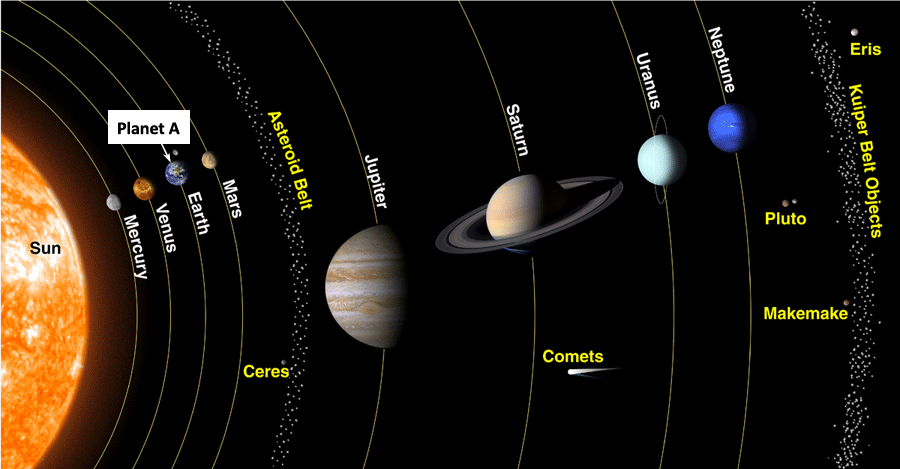
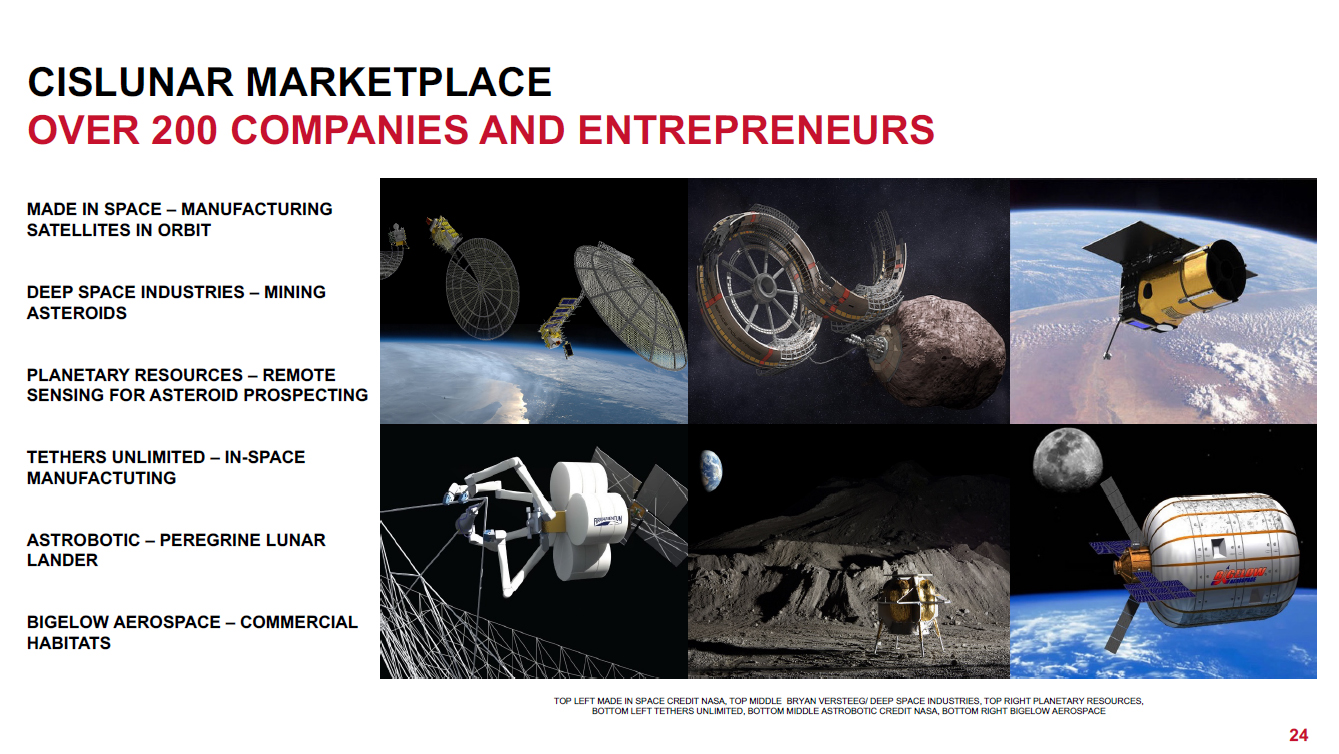
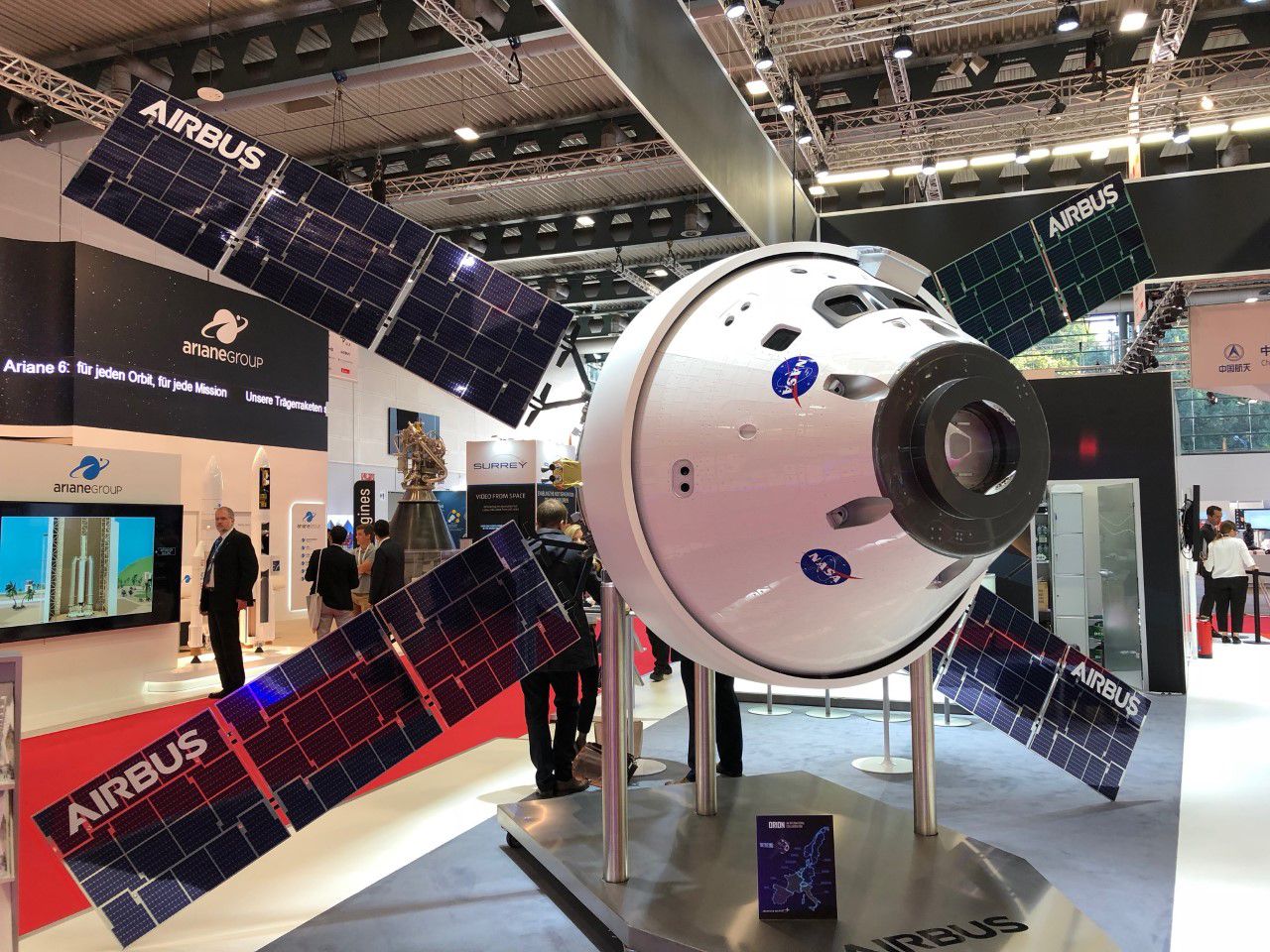


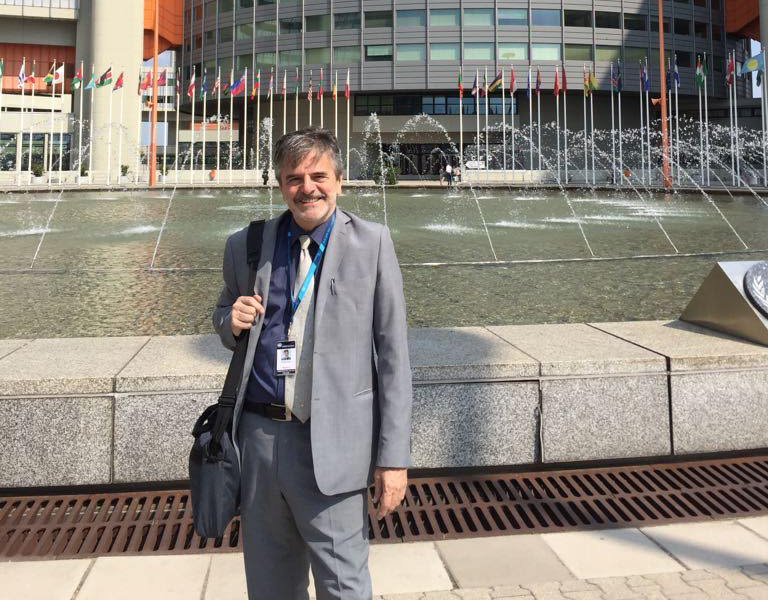
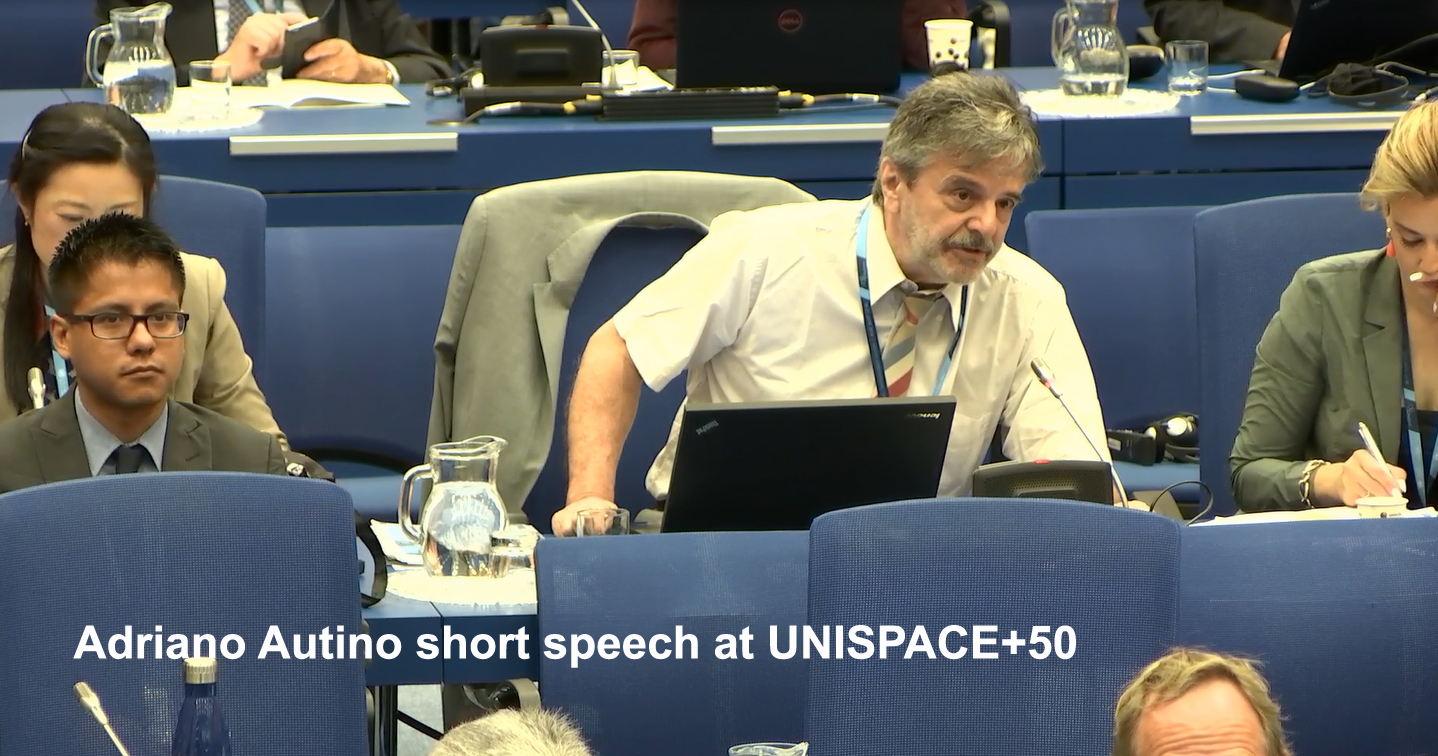
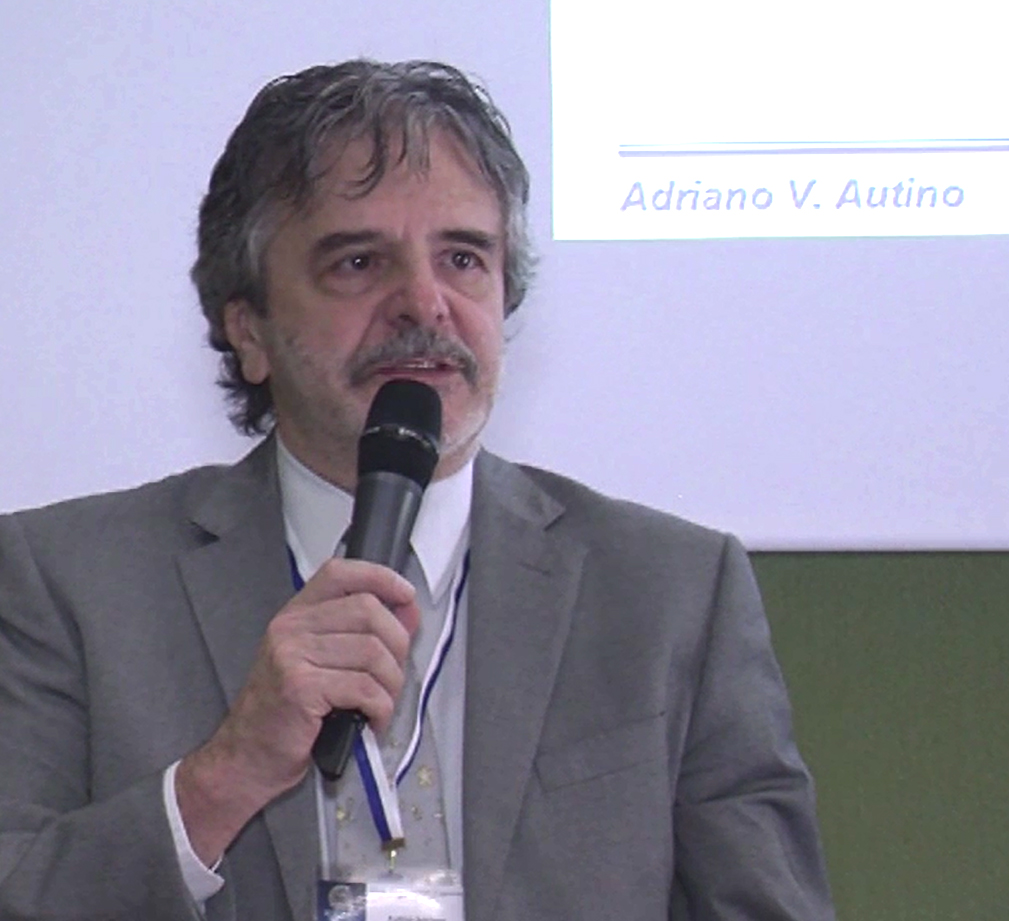






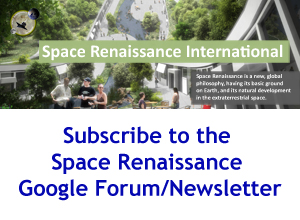

 Space Renaissance France (French Chapter of SRI)
Space Renaissance France (French Chapter of SRI)  Space Renaissance USA, Inc. (USA Chapter of SRI)
Space Renaissance USA, Inc. (USA Chapter of SRI) Space Renaissance (Italian Chapter of SRI)
Space Renaissance (Italian Chapter of SRI) Space Renaissance Academy
Space Renaissance Academy Space Renaissance Initiative Group
Space Renaissance Initiative Group